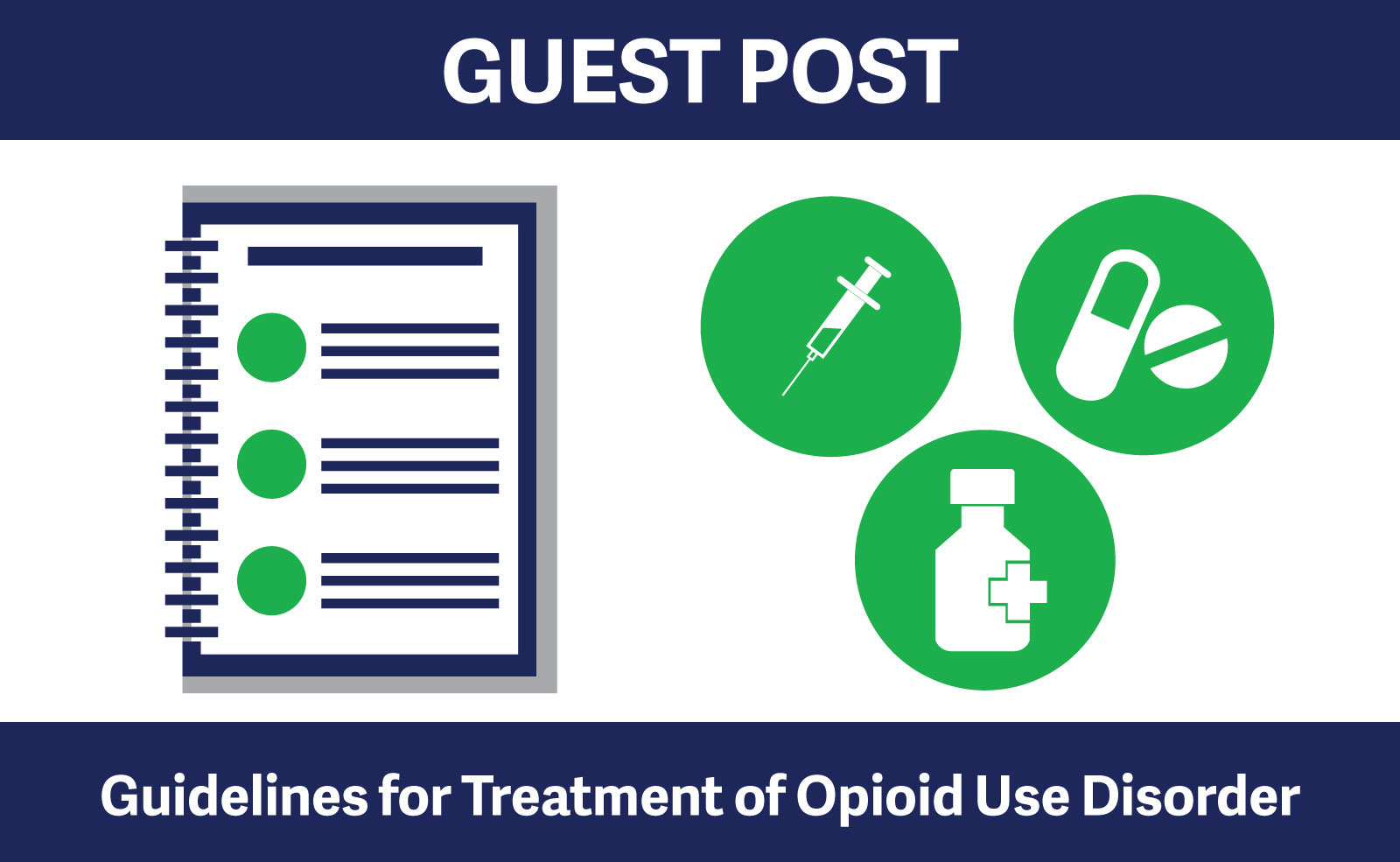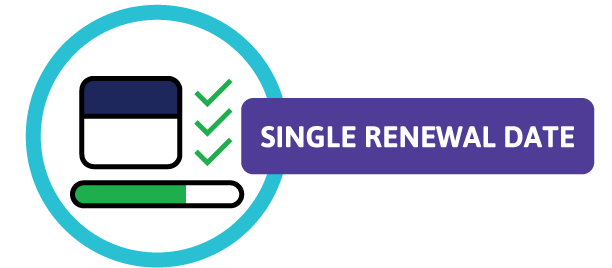GUEST POST: New BCCSU/MoH Guideline for Treatment of Opioid Use Disorder
This is the first in a series of three guest posts from the BC Centre on Substance Use (BCCSU) about the new provincial guideline.
Earlier this year, the BCCSU and the Ministry of Health (MoH) released a new Guideline for the Clinical Management of Opioid Use Disorder. Starting on June 5, 2017, this guideline will become the provincial reference tool for all health care professionals in BC involved in treating patients with opioid use disorders, and the management of the Provincial Methadone Program will transition from the College of Physicians and Surgeons of British Columbia to the BCCSU.
A summary of major recommendations is below:
Focus on buprenorphine/naloxone
Recommendation: Buprenorphine/naloxone (Suboxone®) is the preferred first-line pharmacotherapy for treating patients with an opioid use disorder.
Buprenorphine/naloxone is a 4:1 combined formulation of buprenorphine and naloxone administered as a sublingual tablet(s). It is available as 2mg/0.5mg or 8mg/2mg tablets, which may be halved and/or combined as necessary to achieve prescribed doses. Generic buprenorphine/naloxone is eligible for full coverage through BC PharmaCare (Income Assistance, Plan G, and Fair PharmaCare) and the Non-Insured Health Benefits insurance plans.
Why does the Guideline recommend buprenorphine/naloxone as preferred first-line?
- Improved safety: as buprenorphine/naloxone is a partial opioid agonist, it has a lower likelihood of fatal overdose, lower risk of adverse events, and fewer side effects and drug-drug interactions than methadone.
- More flexible transitions: It is easier for patients to transition from buprenorphine/naloxone to methadone than the reverse if initial treatment is not effective or not well tolerated.
- Supports autonomy: Titrating up to a stable dose of buprenorphine/naloxone can be done very quickly compared to methadone (i.e. 1-3 days for buprenorphine/naloxone vs. >35 days for methadone), requiring fewer clinical appointments and less disruption to daily life. The safety profile also allows for earlier provision of take-home doses, and more flexible dosing schedules (e.g., alternate day dosing).
How might the new BCCSU/Ministry of Health Guideline impact my pharmacy practice?
Pharmacy professionals are an integral part of the treatment care team for individuals with opioid use disorder receiving opioid agonist treatment. You may see a greater volume of prescriptions for buprenorphine/naloxone, including both witnessed and take-home doses, and an increased need to provide patient education, support and guidance.
Guidance for pharmacy professionals:
General
- Provide patient education on how to properly take buprenorphine/naloxone tablets: “Place and hold the tablet(s) under your tongue until it fully dissolves, and avoid swallowing the tablet(s) or saliva, talking, eating, drinking, and smoking. This should take about 5-10 minutes”
- Advise patients to talk to their prescriber about any continuing withdrawal symptoms, craving, and/or non-medical opioid use.
- Refer colleagues, prescribers, and clinical staff who are unfamiliar with the new Guideline to the BCCSU website.
Take-home Doses
Talk to patients about safe at-home medication storage, and provide advice if needed.
- The Guideline recommends using compliance packaging (e.g., blister packs, pouch packs) for all take-home prescriptions to help prevent and reduce diversion. This should be indicated on the prescription; if compliance packaging is not indicated on a prescription, you may wish to confirm with the prescriber.
- Unlike methadone, it is not necessary to witness ingestion of the first dose of a buprenorphine/naloxone carry prescription unless indicated by the prescriber.
Missed Doses
Ongoing communication between the prescribing clinician and pharmacy is crucial for patient safety:
- The prescriber should be notified of any missed doses.
- Prescribers should let pharmacies know in advance of their clinic policy for missed doses; if not provided, contact the prescriber for this information.
The BCCSU/MoH Guideline recommends:
- For missed doses ≤5 days, resume previous dose
- For missed doses ≥6 days, dose adjustment and re-stabilization may be required
- For more information, refer to pp. 46-47 of the Guideline
Stay tuned for Guest Posts on slow-release oral morphine and the BCCSU Education and Training Program. Subscribe to the BC Centre on Substance Use mailing list or follow us on Facebook or Twitter for updates on clinical practice standards and guidelines, upcoming events, and online interdisciplinary education and training programs.

Jessica Jun
Jessica is a Student Research Assistant with the BC Centre on Substance Use (BCCSU) and a B.Sc. candidate in Integrated Sciences at the University of British Columbia. Her research interests include factors in adherence to antiretroviral therapy for individuals with HIV, and innovation in the treatment of opioid use disorder in correctional settings. In her role at the BCCSU, Jessica additionally works with the BC Node of the Canadian Research Initiative in Substance Misuse (CRISM) on clinical trial and community based research in partnership with drug user groups in Vancouver’s Downtown Eastside. Previously, she has worked with Dr. Julie Robillard at the National Core for Neuroethics on validation of a resource to help users navigate e-health information.

Cheyenne Johnson, MPH, RN, CCRP
Cheyenne Johnson is the Director of Clinical Activities and Development with the BC Centre on Substance Use and the Director of the BC Center on Substance Use Addiction Nursing Fellowship. In her current position she oversees the development of provincial clinical care guidance documents and dissemination, including evidence-based clinical guidelines, practice support tools and policy briefs.
Cheyenne completed her Bachelor of Nursing Science at Queen’s University and her Master’s of Public Health at Simon Fraser University. She joined the BC Centre for Excellence in HIV/AIDS in 2013 as a Clinical Research Nurse, where she went on to be the Inaugural Nursing Fellow of Canada’s only addiction nursing training program, the St. Paul’s Goldcorp Addiction Nursing Fellowship.

Emily Wagner
Emily Wagner, MSc, is a Medical Writer at the BC Center on Substance Use. She worked closely with the guideline committee and chairs to develop the BCCSU Guideline for the Clinical Management of Opioid Use Disorder. Emily completed her Master’s of Science at Simon Fraser University. Prior to joining the BCCSU in 2015, she worked as a Research Manager at BC Women's Hospital and Health Centre for seven years in the field of reproductive infectious diseases.
- Guest Post, opioid, Naloxone, Narcotics, Opioid overdose crisis, BC Centre on Substance Use


 Share
Share




